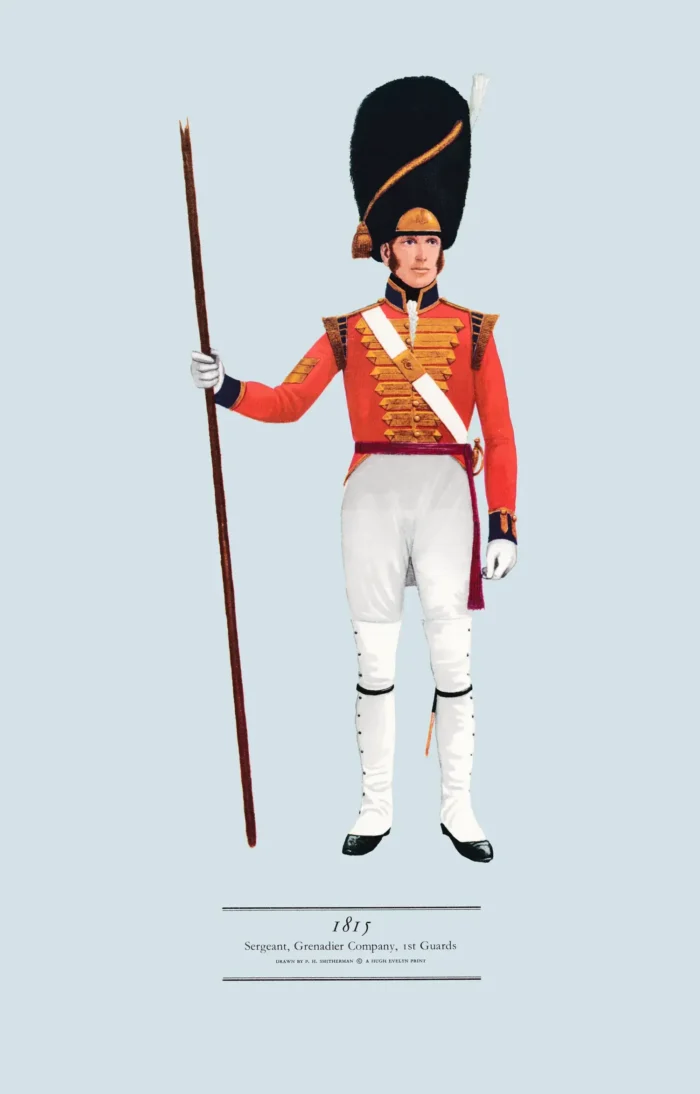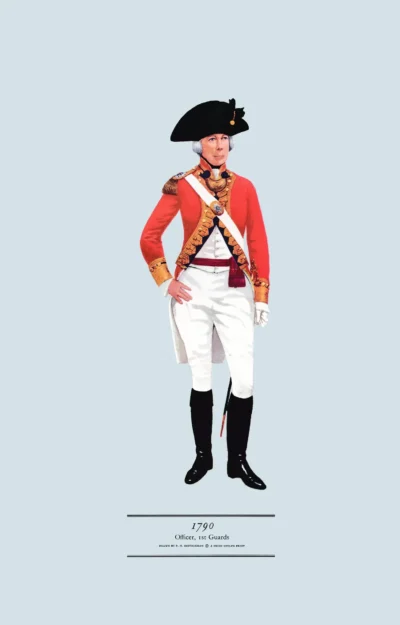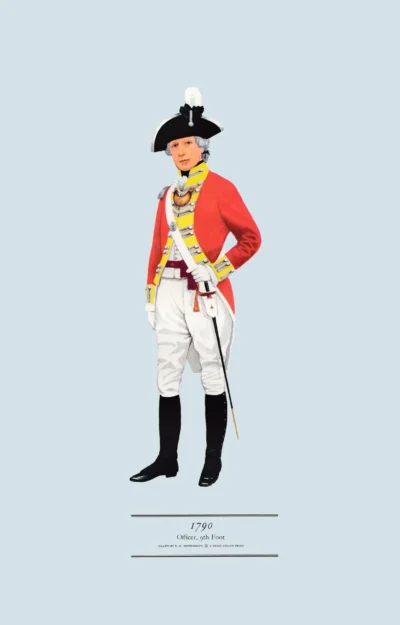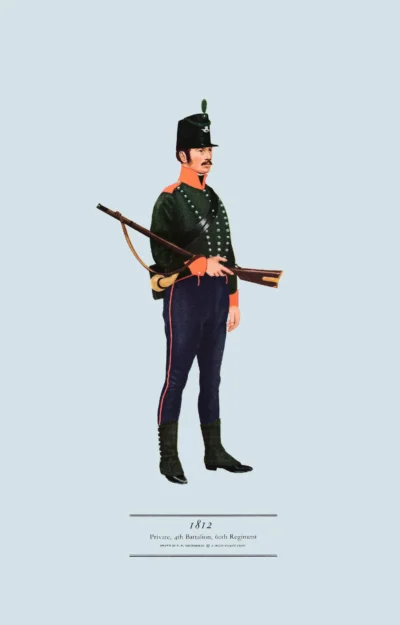Sergeant, Grenadier Company, 1st Guards, 1815 (Grenadier Guards)
£12.50
Named The Grenadier Guards after the Battle Waterloo, 1815; Part of the Guards Division (scroll down for a more detailed Description)
Published 1966 by © Hugh Evelyn Limited; drawn by Colonel Philip Henry Smitherman (1910-1982), Royal Corps of Signals
Size: c. 24.5 x 37.5 cm [9 ½ ″ x 14 ½ ″] (may vary slightly from printers’ cut 50 years ago)
Printed on on medium cardstock weighing 144 g/sm2 faced in light greyish blue (RGB c. d4e1e8)
Print is STANDARD size – shipping is the same for 1 to 10 prints (based on largest print size in your order) – see Shipping & Returns.
In stock
Description
After the Battle of Waterloo, in recognition of their gallant defeat of Napoleon’s Guard, the 1st Guards were awarded the title Grenadier Guards. Thereafter the whole regiment wore grenadier dress. This plate shows a sergeant of the grenadier company, in full dress, immediately before this change took place. The dress preserves the white spatterdashes which had disappeared from the rest of the army twenty or more years before, although in other respects it reflects the fashion of the day. The heavy gold lacing on the coat is unusual in the dress of a sergeant, but similar lacing was worn in all the regiments of foot guards. Identical lacing is in fact worn on the scarlet tunics of drum majors of the foot guards today. The bearskin cap has grown large and cumbersome. It was not worn on active service. The sergeant was armed with a half-pike, eight feet long, only the shaft of which is visible in the picture. The halberd was the more usual weapon of sergeants. After about 1770 the grenade went out of fashion and grenadiers gradually adopted the arms of the rest of the regiment. Just before this date the bearskin cap had a small peak just below the gilt plate. When the 1st Guards became the Grenadier Guards in 1815, the bearskin cap was taken into use by the whole regiment, but the grenadier wings disappeared and were replaced by fringed epaulettes.
Sources: Print by B. Clayton (published some years after 1815) and a contemporary watercolour by D. Dighton.
Additional information
| Weight | 0.0131 kg |
|---|---|
| Dimensions | 23 × 37 cm |





